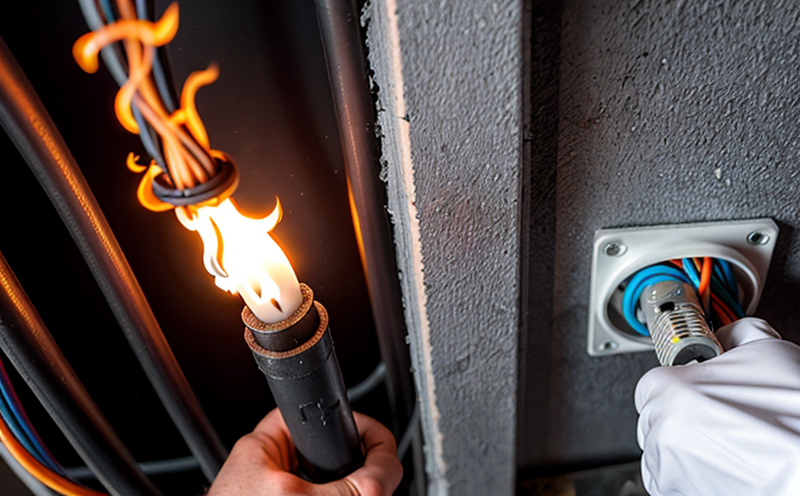Fire Reaction Testing of PVC Insulated Cables
The fire reaction testing of PVC (Polyvinyl Chloride) insulated cables is a critical process in ensuring product safety and compliance with international standards for electrical installations. This test evaluates the material's response to heat, flame, smoke, and toxic gases when subjected to controlled fire conditions. The purpose of this evaluation is to determine the potential hazards that may arise from using PVC-insulated cables during installation or operation.
The testing method typically involves placing a cable specimen in a specially designed furnace where it undergoes exposure to high temperatures for a specified duration. Throughout the test, various parameters are continuously monitored and recorded. These include the length of time taken for ignition, flame propagation rate, smoke generation, heat release, and toxic gas emission levels.
Understanding these metrics is essential because they provide valuable insights into how efficiently PVC insulation can resist or spread fire under realistic conditions encountered in real-world applications. By conducting this test, manufacturers ensure that their products meet stringent safety requirements set forth by regulatory bodies such as the International Electrotechnical Commission (IEC) and Underwriters Laboratories (UL).
Additionally, results from these tests help identify areas where improvements can be made to enhance fire resistance properties without compromising electrical performance. This knowledge is particularly important for industries reliant on uninterrupted power supply systems like telecommunications infrastructure, data centers, hospitals, airports, and other critical facilities.
The importance of accurate testing cannot be overstated given the high stakes involved when it comes to preventing catastrophic failures due to faulty components within these vital networks. Consequently, ensuring that each batch produced adheres strictly to established guidelines is paramount for maintaining public confidence in product reliability.
Why Choose This Test
- To comply with strict regulatory requirements imposed by governmental agencies and industry standards.
- To demonstrate superior product quality through rigorous validation against known fire hazards.
- To protect end-users from potential risks associated with substandard materials used in manufacturing processes.
Conducting comprehensive fire reaction tests ensures that all aspects of PVC insulation are thoroughly examined, thereby providing a robust foundation for safe and reliable electrical systems. This approach not only enhances overall safety but also contributes significantly towards building trust among consumers who depend on dependable infrastructure services daily.
Customer Impact and Satisfaction
- Enhanced Reputation: Positive outcomes from these tests help build a strong reputation for reliability among customers, partners, and stakeholders.
- Increased Market Share: Demonstrating adherence to industry best practices can attract more clients seeking assurance about the quality of their products or services.
- Improved Product Lifespan: By identifying weaknesses early on through testing, manufacturers are able to implement necessary changes that lead to longer-lasting products.
Ultimately, successful completion of fire reaction tests translates directly into higher levels of customer satisfaction and loyalty. As a result, businesses can expect increased profitability along with reduced liability risks associated with defective goods or services.
Environmental and Sustainability Contributions
The focus on improving fire reaction properties also has implications for environmental sustainability. By developing safer materials, manufacturers contribute to reducing the likelihood of fires which can have devastating effects on both human lives and natural environments alike.
Moreover, by ensuring that products meet stringent safety standards early in development stages, there is less need for post-manufacturing recalls or replacements – thereby minimizing waste generation throughout the lifecycle of a product. This proactive approach supports broader efforts aimed at fostering more sustainable practices across various sectors including manufacturing and construction.
In summary, investing in thorough fire reaction testing represents an opportunity not only to meet immediate safety needs but also contribute positively towards long-term environmental goals. It underscores our commitment to creating safer products that align with global trends toward greater sustainability consciousness.





